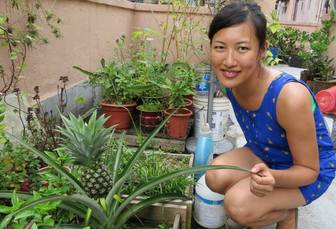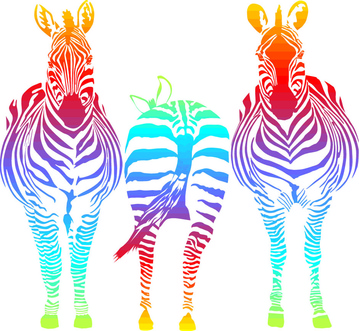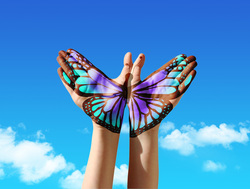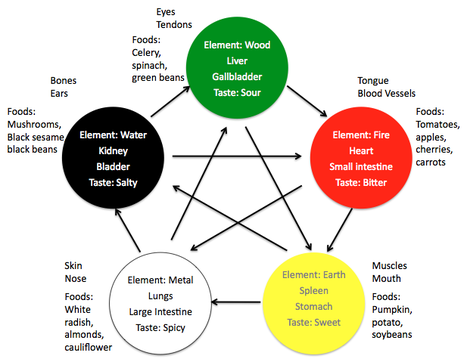|
|
Back to Blog
Doctors and diet books expound the polychromatic diet. But did you know that the idea has been in existence for more than 2,000 years? Following the colours of your food to eat healthily is simple, and it is not a novel concept. The naturally occurring colours in fruits and vegetables are unique signatures of specific health benefits for different foods. According to the “Yellow Emperor's Inner Classic” (黃帝內經) - the earliest and most comprehensive written work of Traditional Chinese Medicine (TCM) dating back to 2200 years ago, the five elements - wood, fire, earth, metal and water - are the root of all existence, and each element corresponds to the colours green, red, yellow, white and black, respectively. Consuming the foods of a particular colour can replenish, regenerate and restore the natural, healthy state of matching organs and body parts (See diagram below). Each colour also corresponds to a different flavour, and it is said that cravings for a particular flavour could indicate whether an organ is at less than optimal condition. Skeptics who find this concept abstract can find corresponding explanations of how different coloured foods benefit health in Western science. Distinctive colours occur in fruits vegetables due to the prescence of different phytochemicals. Phytochemicals are generally associated with having high antioxidative and anticarcinogenic (anti-cancer) properties Another parallel with TCM can be drawn... According to an article published in 2009 in "Clinics in Dermatology,” dark leafy green vegetables contain high levels of Lutein, which may lower your risk for eye conditions, including cataracts. Remarkably, this finding corresponds with the TCM theory that eating green colour foods can benefit the eyes. Another parallel with TCM can be seen where the fire element and the colour red is associated with heart health. Studies have found that quecertin, a flavonoid (a sub-class of phytochemicals) that contribute to the red colour in apples, dark cherries and red wines may help reduce inflammation and the build up of LDL (low density liproproteins or “bad") cholesterol in arteries, consequently reducing the risk of atherosclerosis, which can lead to heart attack or stroke. Quercetin has been shown to reduce LDL concentrations in overweight subjects at high risk of heart disease. The different coloured fruits and vegeables pictured above are just a few examples of those you can choose from. While foods of each colour have their specific benefits, they work best in synergy with each other. Therefore it is advisable to have as many colours on your plate for a healthy, balanced diet. For some fun, creative inspiration on eating foods of different colours, check out the work of French conceptual artist Sophie Calle 1997 project “The chromatic diet,” where she created colour coordinated meals for different days of the week for a fictitious character in Paul Auster’s 1992 novel ''Leviathan.'  Alexandra Tung at a community urban rooftop farm in Yau Ma Tei. Alexandra Tung at a community urban rooftop farm in Yau Ma Tei. This article was contributed by Alexandra Tung, RD. Alexandra Tung is a food and nutrition expert who holds a Master's of Science degree in Nutrition with a focus on Agriculture, Food and Environment. She has worked with community clinics, NGOs, hospitals and restaurants, and researched and edited for publications on food policy and sustainable agriculture. She is currently based in Hong Kong, working on projects related to food, heath, nutrition education and urban agriculture. Most recently, she worked with the organization Wknd Farmer's Club to plan a colour-themed dinner where she spoke to participants about the benefits of eating different coloured foods.
0 Comments
Read More
Back to Blog
RECOLOUR YOUR LIFE TO CHANGE IT9/30/2013  Life's more fun in colour! Life's more fun in colour! We’ve all experienced the profound difference a new shade of paint can make in a room. Or how a red dress makes us feel as opposed to a light blue one. This is not to be undervalued! Colors have meaning and express a certain energy, and our subconscious is constantly taking cues. Simply put, color is one of the most powerful tools used in feng shui. If you’re looking to make a change in your life, you may want to reconsider the color schemes in your home and office. But do so consciously! Start with the following list, and consider hiring a feng shui consultant who can help you choose the appropriate colors according to feng shui principles, such as the bagua map and elements. Red Red represents the element of fire, and because of its intensity, is considered a lucky color in feng shui. Use it in doses to redirect energy around the home. Basic meanings: hot, bold, daring, high voltage, lucky. Avoid red in cases of anxiety, insomnia, or over-activity. Orange Orange is considered a “social” color, one that is happy, vibrant, and eye-catching. Basic meanings: creative, exuberant, lively, fun-loving, extroverted. Avoid orange when creating a space of quiet and reflection. Yellow Yellow is cheerful and uplifting. It can also trigger the intellect, as it’s mentally stimulating. Basic meanings: happy, sunny, enlivening, powerful, active, cheerful. Avoid yellow if anxious and wanting to calm the nerves. Green Green represents balance, growth, and abundance. In the chakra system, it’s located in the heart. It can also signify youthfulness. Basic meanings: healing, balanced, expanding, lively, prosperous, fresh. Because of green’s balancing nature, there are few times it should be avoided. Blue Blue establishes calm. It’s the color of the sky and ocean and therefore gives a sense of vastness, as in “the wide blue yonder.” Basic meanings: truth, communication, peace, calm, spiritually attuned. Avoid blue in cases of depression or when needing to feel more social. Purple Purple has a feeling of royalty, wealth, and high spirituality. Basic meanings: rich, noble, deep, quiet, wise. Avoid purple if wanting to feel more extroverted or connected to the Earth. White White is all about new beginnings, purity, and innocence. Basic meanings: cleansing, pure, light, free, whole. Avoid white when feeling overwhelmed. Black Black is introspective and represents the void. Basic meanings: protective, secretive, mysterious, hidden. Avoid black when wanting to express oneself and feel uplifted. Pink Pink is the color of unconditional love and feminine energy. Basic meanings: love, nurturing, romance, peace. Avoid pink when wanting to activate a more masculine energy. Brown Brown is an Earth tone and is therefore nurturing and grounding. Basic meanings: rooted, quiet, nurturing, grounding. Avoid brown when wanting to expand and “branch out.” Using color consciously can enhance your life. Wear it, decorate with it, write with it, or paint with it! Remember different shades will vary the meanings, so consider that. And be sure to set your intentions while working with color to activate its energy and potential even more. And most importantly, have fun! After all, you’re working with rainbows! This article was contributed by Katie Rogers and was first published as the article "What each color means in Fengshui" on MindBodyGreen Daily. Katie Rogers is a certified Feng shui consultant through the Feng Shui Training Center in Salt Lake City, Utah. She has been certified since 2004. She teaches e-classes and can serve her Asian clientele remotely through her website at http://www.katierogersfengshui.com/Site/Home.html She also writes an uplifting blog www.thesparklit.blogspot.com
Back to Blog
 We all have times when we feel down and out. Sometimes it almost seems like we'll never see the silver lining. Here is one of Transformational coach, Ling Kulanko's favourite tools for dealing with negativity, and creating the life you've always dreamed possible, FREE, this month on Evolve Asia.
|
||||||
